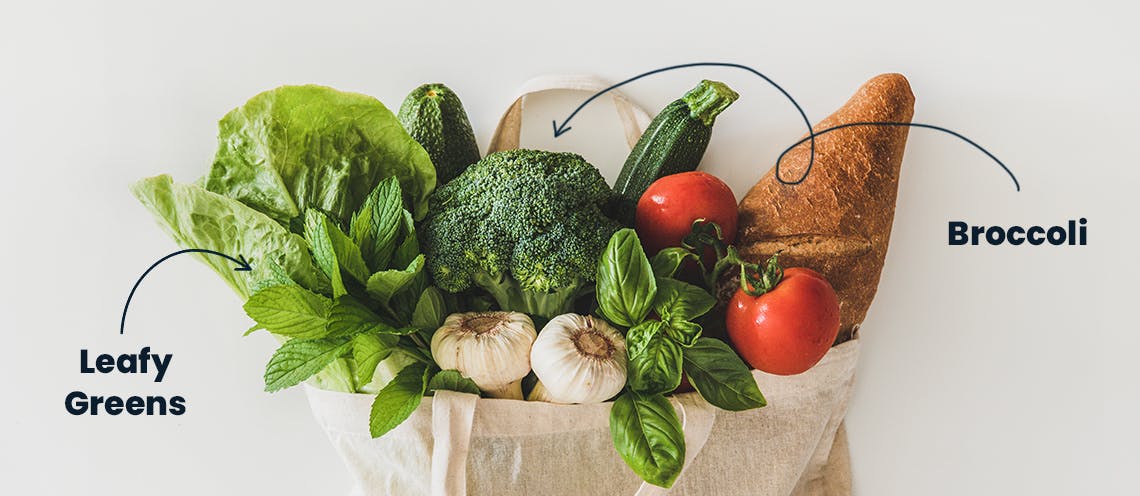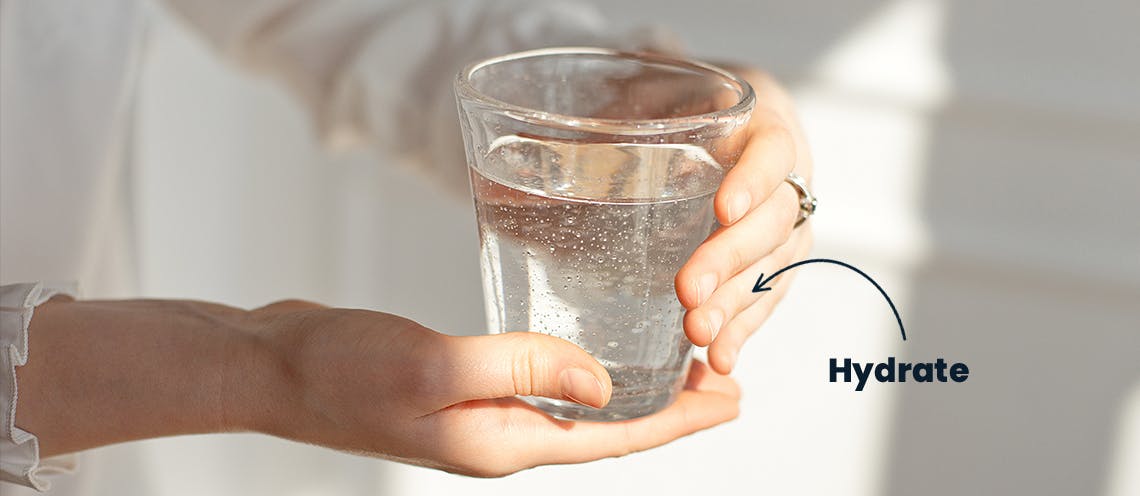Everything You Need to Do Before and After Donating Plasma
Donating plasma is kinda our thing, and we want it to be your thing, too. Whether you're a first-time donor or a regular, use these tips and tricks to prepare for your donation.

How to Prepare for Your Plasma Donation
What to Eat Before Donating Plasma
If you don’t know much about the process, plasma donation may seem a little intimidating. Don't worry. A quick and comfortable plasma donation experience is easy to achieve with a few simple health habits. Unlike whole blood, plasma is about 90% water and 10% proteins, so it's best to drink a lot of water and eat protein and iron-rich foods before donating. One of the most important things to do is to eat a full, healthy meal on the day of your donation, within two hours of your appointment.
Eating healthy food doesn't just keep your body feeling its best post-donation. It also ensures you pass your health screening, which is always required before your donation.
If you've ever donated blood, convalescent plasma, or platelets, you may be familiar with the vitals check that takes place before every donation. In addition to taking your blood pressure, pulse, weight, and temperature, we'll measure the proportion of red blood cells in your blood, also known as your hematocrit, and total blood protein level. It's important to measure your hematocrit because when you make a donation, it temporarily removes some red blood cells from your body. We want to make sure you have enough red blood cells to donate safely. Eating an iron-rich diet can help keep your hematocrit within an optimal range.
Iron-Rich Foods
Low hemoglobin levels can be an indicator of iron deficiency or anemia. Naturally, eating iron-rich foods can help you maintain a healthy balance in your blood and increase your iron levels. For your pre-appointment meal, choose proteins with plenty of heme iron, which is a type of iron present in animal sources and your body can absorb it more easily. Lean red meat, poultry, and seafood are good choices. However, tofu, beans, quinoa, and lentils are excellent sources of non-heme, or iron from plant sources, if you follow a vegetarian or vegan diet.
In addition to eating the proteins mentioned above, you can boost your iron levels by eating the following foods:
- Vegetables: Peas, edamame, broccoli, and dark leafy greens like spinach kale, and collard greens
- Fruit: Watermelon, strawberry, raisins, prunes, dates, dried apricots
- Grains: Wheat products, oats, iron-fortified products (like pasta, cereal, or rice)

Protein-Rich Foods
Eating based on your recommended protein intake (or slightly more) is a great practice when preparing for your plasma donation. You can use this nutrition calculator to determine how many grams of protein you need, then meet those recommendations within 24 hours before your appointment.
Always opt for lean proteins like chicken and fish when possible to maximize the nutrients in your meal.
Other protein-rich foods include:
- Beans
- Shrimp
- Eggs
- Yogurt
- Nuts, nut butters, and seeds
Vitamin C-Rich Foods
To further boost your iron intake, eat foods high in vitamin C, which helps you absorb more non-heme iron. Doing so is especially important for donors who follow a plant-based diet. Some vitamin C-rich foods double as iron-rich foods. These include spinach, broccoli, kale, peas, and strawberries. However, you can also consume plenty of vitamin C by adding bell peppers, oranges, tomatoes, kiwis, and papayas to your pre-appointment meal.
What Not to Eat Before Donating Plasma
Try to avoid consuming sodium-rich and fatty foods and drinks like French fries, pizza, chips, candy, ice cream, and soda on donation day. Besides being detrimental to your overall health, a high-fat diet can cause lipemia, which is the presence of a high concentration of lipids, or fats, in your blood cells. This can give your plasma a "milky" appearance, which can impact the tests that are run on your blood. If your donation cannot be properly tested, you may be deferred from donating.
If you're working on boosting your iron levels, another thing to be mindful of is consuming coffee, tea, red wine, chocolate, milk, or high-fiber foods near your pre-donation meals. Consuming these foods and beverages too close to mealtime can hinder iron absorption.
Another tip to keep in mind: If you use any form of tobacco or nicotine, avoid doing so for at least an hour ahead of your donation.
What to Drink Before Donating Plasma
Staying hydrated before the plasma donation process is crucial. Since plasma is about 90% water, drinking plenty of water is an excellent way to help your body recover post-donation.
In the 24 hours before your donation, plan to drink the recommended 9 to 13 cups of water. On top of this amount, the American Red Cross recommends drinking an extra 16 ounces, or two cups, right before your appointment. When you are hydrating make sure to avoid drinking anything too cold or too hot, which could impact your body temperature. Opt for room temperature water instead.
Being well-hydrated is also the best way to be efficient with your time. Since plasma is mostly water, drinking the recommended amount of water can help make the donation process go faster.
Some blood donation centers highlight low-sugar fruit juice as a good alternative for some of your water intake, so feel free to treat yourself to a few cups of this substitute if desired. Orange juice is a great way to boost your vitamin C intake as well.
Plasma donors should avoid alcohol, which can promote dehydration, 24 hours before an appointment and avoid caffeine, which can impact your pulse.

Other Ways to Prepare
The plasma donation itself should only take 45 minutes to an hour. While it's not a ton of time, there are a few easy ways to maximize your comfort when donating plasma. We recommend:
- Getting plenty of sleep the night before
- Bringing something to read, watch, or listen to
- Bringing a sweater or jacket to layer if you’re cold
- Wearing comfortable clothes with sleeves you can easily roll up
This goes without saying, but if you feel sick, have a fever, or aren't in good health, please stay home and get well. We'll see you when you're feeling better.
Staying Healthy After Your Plasma Donation
After your plasma donation, continue taking care of your health to minimize any side effects like fatigue or dehydration by following these simple tips:
- Take your time getting up
- Eat a snack or light meal within two hours of your appointment
- Continue to drink plenty of water. The American Red Cross recommends drinking an extra 4 cups in the 24 hours post-donation.
- Avoid alcohol for at least four hours after your donation
- Avoid tobacco and nicotine for at least one hour post-donation
- Avoid strenuous activity, including heavy lifting, for the rest of the day
- Complete your daily protein intake with your next meal or meals
- Continue eating foods rich in iron and vitamin C
Nutrition Tips for Regular Plasma Donors
If you're considering becoming a regular plasma donor, which means coming as often as twice per week, eating well is a must. Besides impacting your overall health, your diet will determine how likely you are to continue qualifying to donate plasma and how well you'll feel post-donation.
Regular donors should focus on eating a high-protein and iron-rich diet every day and aim to eat as clean as possible. While fatty foods should be enjoyed in moderation, the same pre and post-donation tips apply. Try to consciously schedule those more indulgent meals, so they're never within 24 hours of an appointment.
If you tend to be iron deficient, you may want to consider adding vitamins and supplements to your daily regimen. As always, consult your physician to find the right combination of supplements along with diet and lifestyle changes, to optimize your iron levels.
This article is for informational purposes only. It is not, nor is it intended to be, a substitute for professional medical advice, diagnosis, or treatment and should never be relied upon for specific medical advice.
